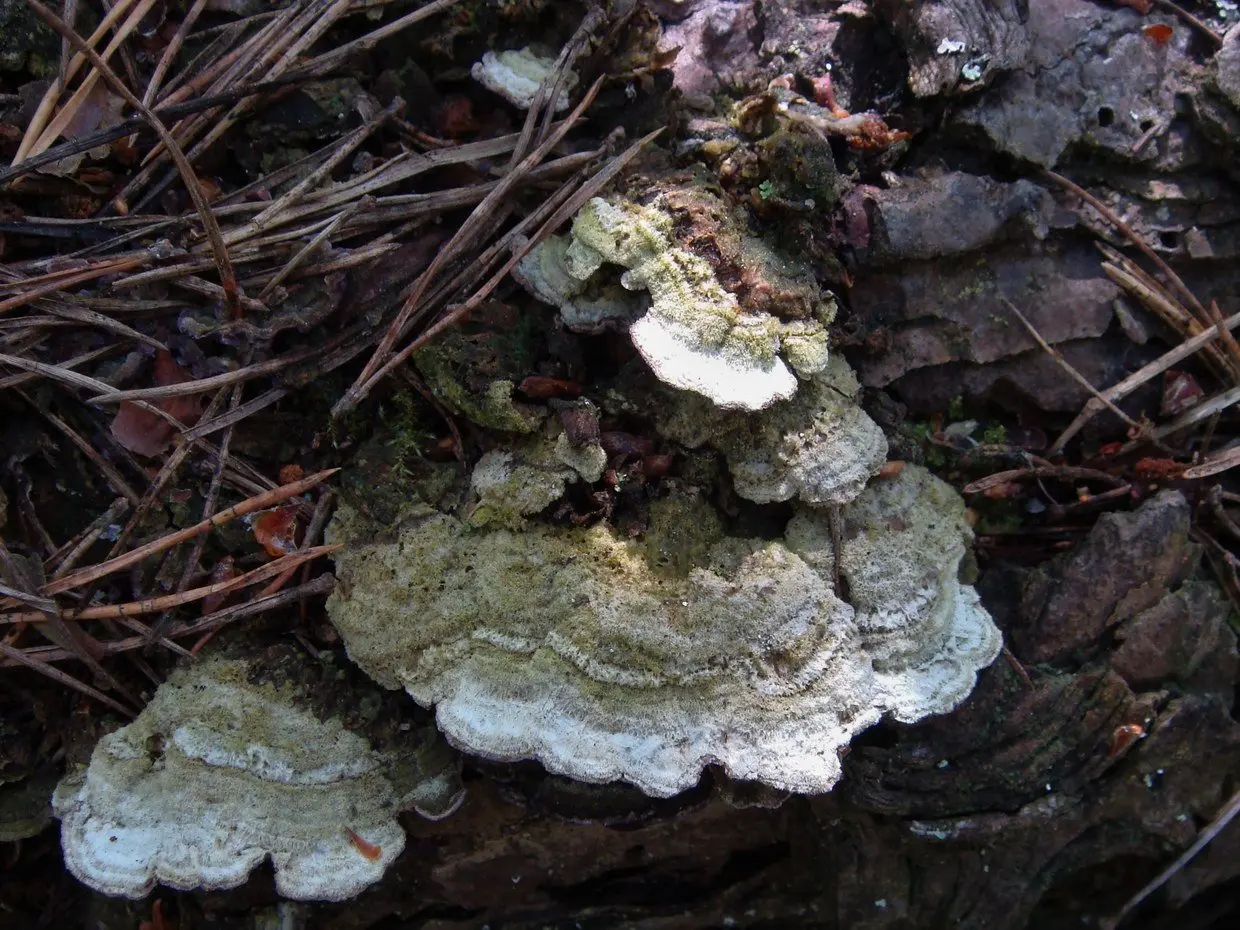Contents
Trihaptum brown-violet (Trichaptum fuscoviolaceum)
- Division: Basidiomycota (Basidiomycetes)
- Subdivision: Agaricomycotina (Agaricomycetes)
- Class: Agaricomycetes (Agaricomycetes)
- Subclass: Incertae sedis (of uncertain position)
- Order: Polyporales (Polypore)
- Family: Polyporaceae (Polyporaceae)
- Genus: Trichaptum (Trichaptum)
- Type: Trichaptum fuscoviolaceum (Trichaptum brown-violet)
:
- Hydnus brown-violet
- Sistotrema violaceum var. dark purple
- Irpex brown-violet
- Xylodon fuscoviolaceus
- Hirschioporus fuscoviolaceus
- Trametes abietina var. fuscoviolacea
- Polyporus abietinus f. dark purple
- Trichaptum brownish-purple
- Deceiving agaricus
- Sistotrema hollii
- Sistotrema meat
- Sistotrema violaceum

Fruiting bodies are annual, most often open-bent, but there are also completely open forms. They are small in size and not very regular in shape, the caps grow up to 5 cm in diameter, 1.5 cm in width and 1-3 mm in thickness. They are located singly or in tiled groups, often fused with each other by the sides.
The upper surface is whitish-grayish, velvety to slightly bristly, with a white, lilac (in young fruiting bodies) or brownish uneven margin. It is often overgrown with green epiphytic algae.

The hymenophore consists of radially arranged short plates with uneven edges, which are partially destroyed with age, turning into flat teeth. In young fruiting bodies, it is bright purple, with age and as it dries, it fades to ocher-brown shades. The core of the plates and teeth is brownish, dense, continuing into a dense zone between the hymenophore and the tissue. The thickness of the fabric is less than 1 mm, it is white, leathery, becomes stiff and brittle when dried.

The hyphal system is dimitic. Generative hyphae are thin-walled, hyaline, almost not branching, with clamps, 2-4 µm in diameter. Skeletal hyphae are thick-walled, hyaline, weakly branching, non-septate, with a basal clamp, 2.5–6 µm thick. Spores are cylindrical, slightly curved, smooth, hyaline, 6-9 x 2-3 microns. the imprint of the spore powder is white.
Trihaptum brown-violet grows on fallen coniferous trees, mainly pine, rarely spruce, causing white rot. The period of active growth is from May to November, but since the old fruiting bodies are well preserved, they can be found throughout the year. Common view of the temperate zone of the Northern Hemisphere.

Trihaptum larch (Trichaptum laricinum)
In the northern range of larch, Trihaptum larch is widespread, which, as its name implies, prefers dead larch, although it can also be seen on large deadwood of other conifers. Its main difference is the hymenophore in the form of wide plates.

Trihaptum biforme (Trichaptum biforme)
Trihaptum doubly grows on fallen hardwood, especially on birch, and does not occur at all on conifers.

Trihaptum elovy (Trihaptum abietinum)
In Trichaptum spruce, the hymenophore in youth is represented by angular pores, but quickly turns into an irpexoid (consisting of flat teeth, which, however, do not form radial structures). This is its main difference, because, at least in Northern Europe, both of these species, both spruce trihaptum and brown-violet trihaptum, successfully grow on spruce and pine deadwood, and sometimes even on larch.
Photo in article gallery: Alexander.









